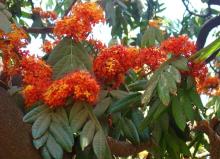The original work of Bṛhatkathā is not available today. However, we can infer its structure and content based on the Kathā-saritsāgara. The main storyline relates to Udayana and his son Naravāhana-datta and comes with a large number of sub-stories. It seems like the story of Udayana was as popular as the stories of Rāmāyaṇa, Mahābhārata, and Bhāgavata in the past.
Author:hari
उस समय में वेदों का अनुसरण करने वालों ने भी बौद्ध धर्म का बहिष्कार नहीं किया था। सातवाहनों ने न केवल सांची स्तूप के द्वारों का निर्माण करवाया अपितु अमरावती ने एक पूरे स्तूप का निर्माण भी करवाया। उसके कुछ अंश चेन्नई, एगमोर के शासकीय संग्रहालय तथा ब्रिटिश संग्रहालय में प्रदर्शनार्थ रखे हैं[1]। दिखाई दे रहा है वैसा तो उस समय राजगुरुओं के मध्य भी नहीं था। संभवतः संप्रदाय विशेष की भावना से प्रेरित कुछ मतावलम्बी रचनाकारों की कृतियों ने अन्य पंथो के प्रति इस प्रकार घृणा भाव को जन्म दिया ह
A Subtle Concept
The truth explained in this appendix is that of the paramārtha.
We have explained earlier that truth is of three kinds: (1) vyāvahārika — pertaining to worldly life; (2) prātibhāsika : It is seen only in internal experience such as dreams; (3) pāramārthika : This is the sadvastu which remains constant in all places and times. That itself is the principle of the parabrahma. Presently, we are discussing the third one.
भगवान बुद्ध के जीवन की इस घटना को देखें। एक दिन बुद्ध के विश्वास पात्र तथा संबंधी (गृहस्थजीवनका) विख्यात आनन्द अपने साथ यशोधरा (बुद्ध के पूर्वाश्रम मे की पत्नी) को लेकर बुद्ध के समक्ष उपस्थित होकर कहने लगा “गुरुजी! महिलाओं को भी सन्यास की दीक्षा प्रदान कीजिए!” । जब बुद्ध ने उत्तर दिया ‘नही! यह नही हो सकता है’ तब आनन्द ने पूछा ‘आप महिलाओं को सन्यास की दीक्षा क्यों नहीं दे सकते है ? क्या आप ही नहीं कहते हैं कि सब लोग समान? तब बुद्ध बोले ‘नही !
One thing is established from this discussion of the history of philosophy; even though the testimony of the Vedas is necessary for all the three matas, since natural variation in the tendencies of human intellect worked independently, differences of opinion naturally arose in Vedanta. Difference in mati (intellect) is the main reason for difference in mata (opinion). Difference in intellect is the difference in capability, and variation in its tendencies is born out of its interaction with the manas.
Trivikrama-bhaṭṭa
Among the ornate campū compositions available in Sanskrit, Nala-campū authored by Trivikrama-bhaṭṭa is the oldest. The author had a penchant for puns, which he justifies in this manner:
वाचः काठिन्यमायान्ति भङ्गश्लेषविशेषतः।
नोद्वेगस्तत्र कर्तव्यो यस्मान्नैको रसः कविः॥ (1.16)
Thippadoddi is a village on the north-eastern border of the Mysore Princely State. Punganoor is about eight to nine miles from Thippadoddi. There resided about twenty to twenty five families - one family of śānubhoga (Village Accountant), fifteen families of Reddy-Vokkaligas, five to six families of what is called the Harijan caste and the rest of other castes. The houses were all made of mud walls, some with mud roofs and rest with local tiles. No house had any plastered flooring.
11. Saṃlāpaka – A saṃlāpaka has either three or four acts and the nāyaka is a pāṣaṇḍa[1], i.e., a heretic. The play evokes all rasas except for śṛṅgāra and karuṇa. The plot consists of the story of an attack on a town, a display of pride, a suggestion of war and other manmade and natural calamities. Bhāratī-vṛtti and kaiśikī-vṛttis are absent. Example: Māyākāpālika.








